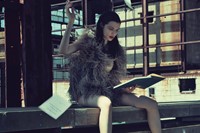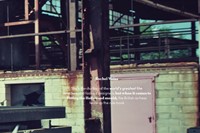She’s the darling of the world’s greatest film directors and fashion designers, but when it comes to fitting the Hollywood mould, the British actress tears up the rule book.
Rachel Weisz was inspired by postmodern dance legend Pina Bausch in these stills, taken from a film made for AnOther. Known for her complex roles and chameleon talent, the actress has no less than eight major films in the pipeline, but the 41-year-old Oscar-winner has always kept her distance from Hollywood, choosing to base herself in New York and collecting accolades for her performances on the London stage. AnOther asked artist and writer Harland Miller, best known for his large-scale paintings based on Penguin paperbacks, to interview Weisz for our cover story. It’s not the first time they’ve met, as Miller recalls …
After the Berlin wall fell I had decided to move there. Coincidentally a friend – “crazy Ella” – was driving out there from London the same weekend, and on an impulse her friend Rachel came along. I drove a black Jag at the time and Ella discreetly asked if Rachel could come with me; Ella drove a decommissioned London taxi and was embarrassed by how much it vibrated at anything over 50. It was a slow convoy, but it was, as they say, the beginning of a beautiful friendship. I recall a few coffee stops, the night ferry in between and then the morning sun flickering through the silver birch trees that Hitler had planted along the road to Berlin.


What strikes me now, looking back, is how amiable and adaptable Rachel was to the way the weekend quickly fell apart. The key for the apartment I was borrowing on Sophienstraße was not under the mat as promised. Contemplating the next move we went to a bar and got drunk – I lost my wallet and a period of not eating ensued. Low blood sugar kicked in and turned everything black. I’ve got a hazy memory of killing time in a succession of all-night bars. At some stage I seemed to come round from a trance into an empty club. On the dance floor two figures silhouetted against a strobe light were headbanging to a heavy metal track – I hunted around for Rachel to say “Let’s get out of here”, only to discover that she was one of the two dancers.
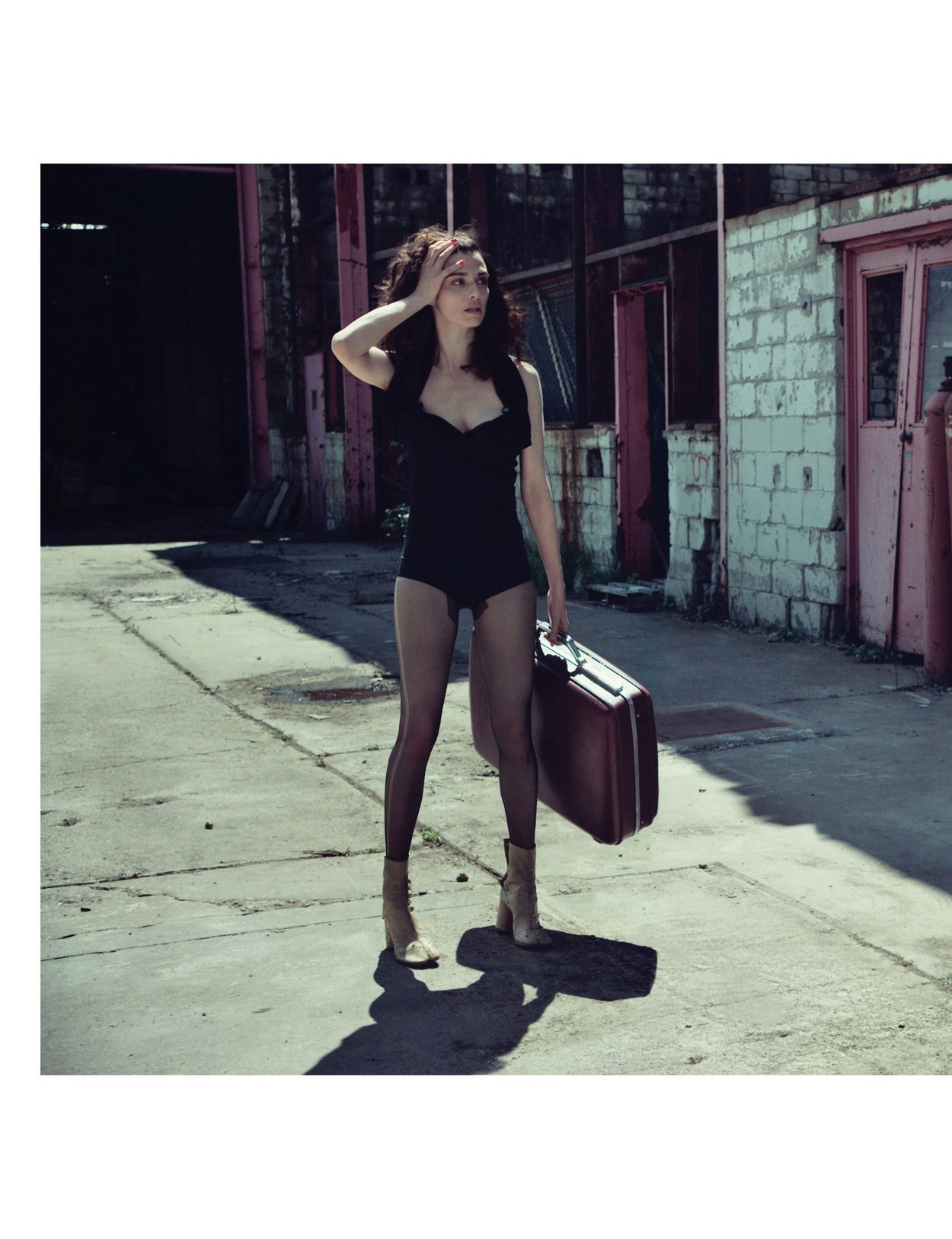
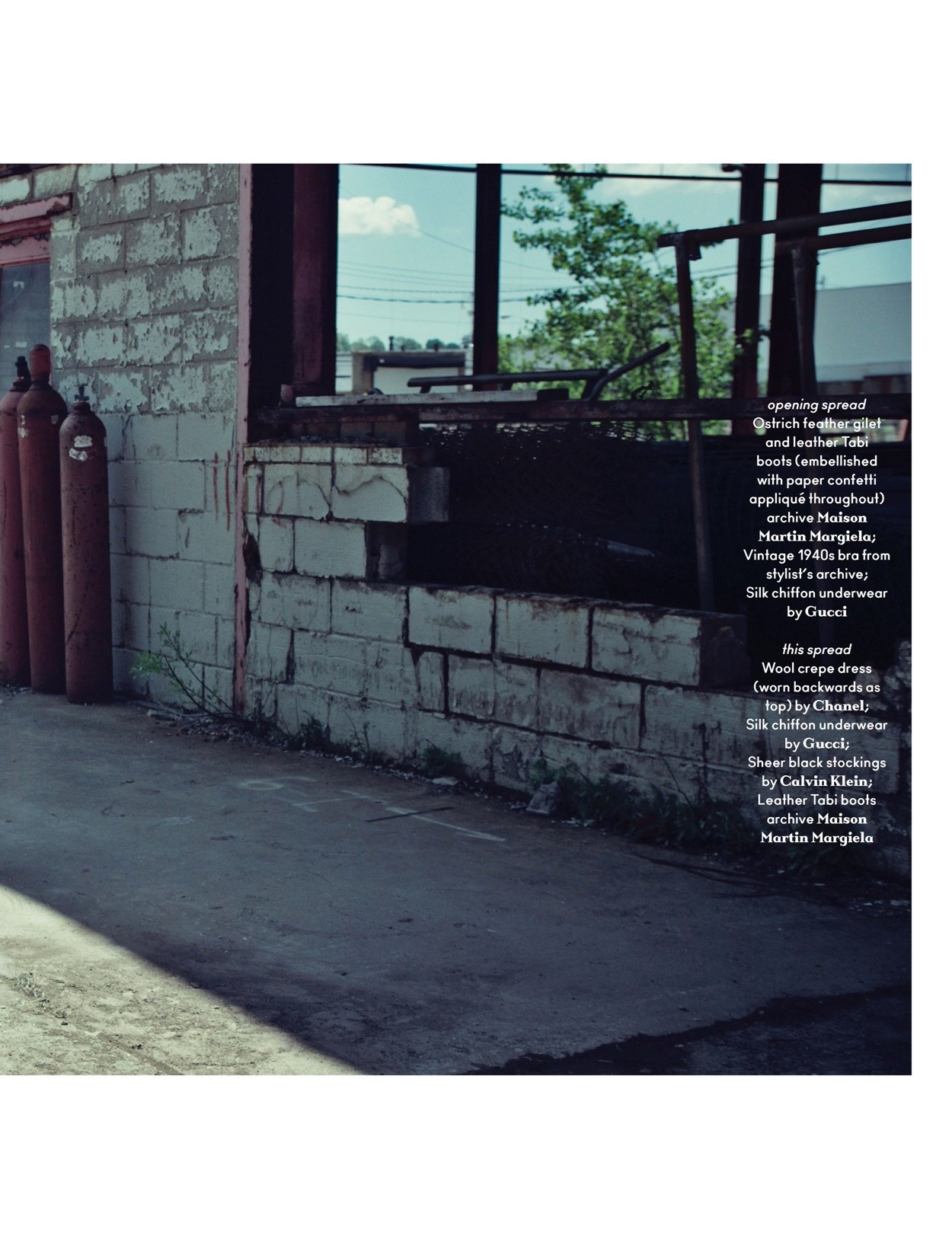
I remember coming out into daylight and going to a café for breakfast. Afterwards Rachel somehow managed to make a telephone call (not that easy in East Berlin in those days) and was suddenly having to fly back to London. After we dropped her at Tegel airport I realised she hadn’t really explained why she’d had to dash. A characteristic reticence I soon discovered, when it comes to talking about herself. I vaguely got that it was something work related – an audition, a break – and I didn’t see her again for a year. But all things considered I’m imagining it went OK. Glancing at Rachel’s upcoming films, she’ll play a political activist in David Hare’s spy thriller Page Eight, step into the shoes of real-life Nebraskan cop Kathryn Bolkovac in Whistleblower, star in Jim Sheridan’s mystery Dream House and be directed by cinematic legend Terrence Malick in his follow up to Tree of Life. We met in Rachel’s New York apartment, where she lives with her young son, Henry.
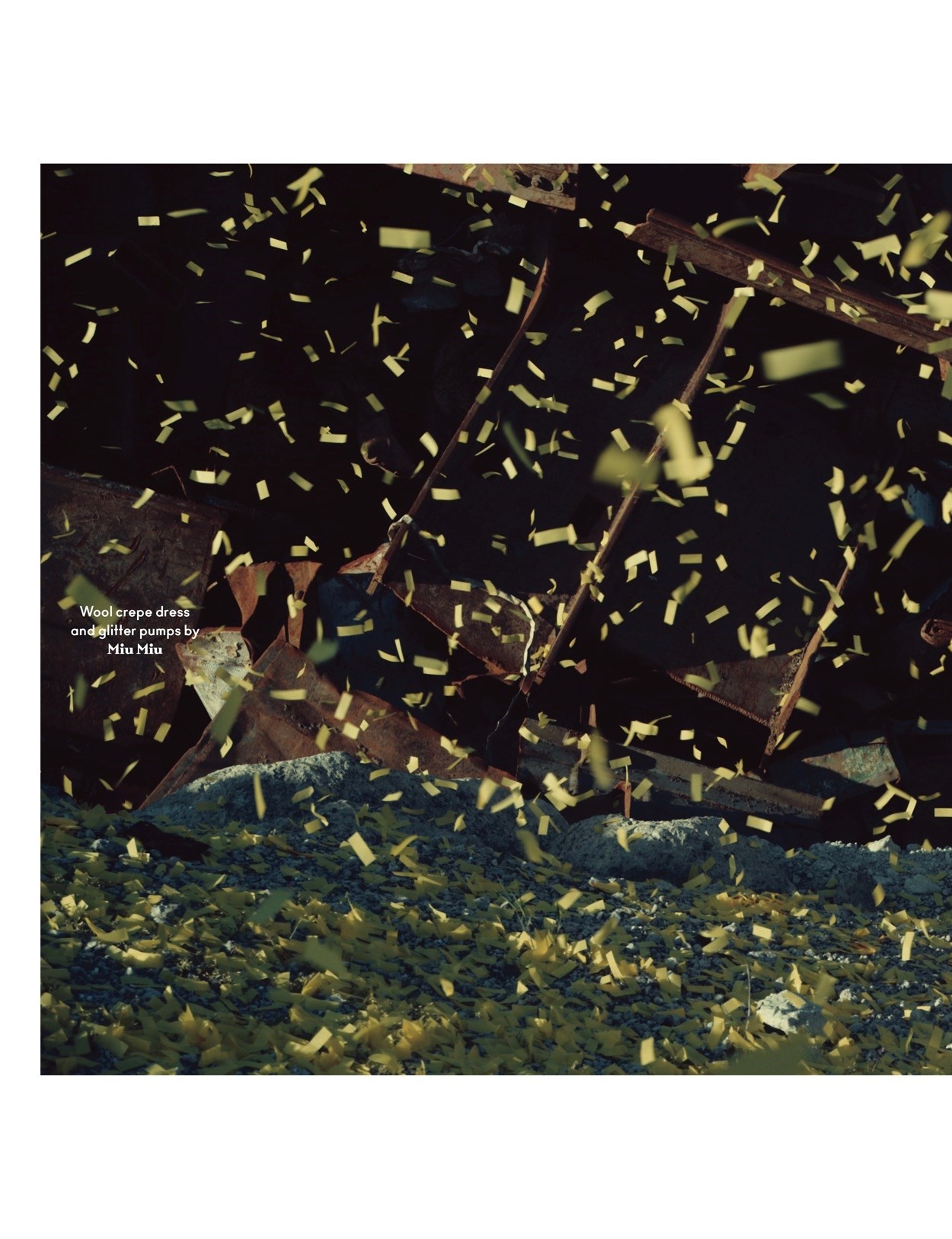
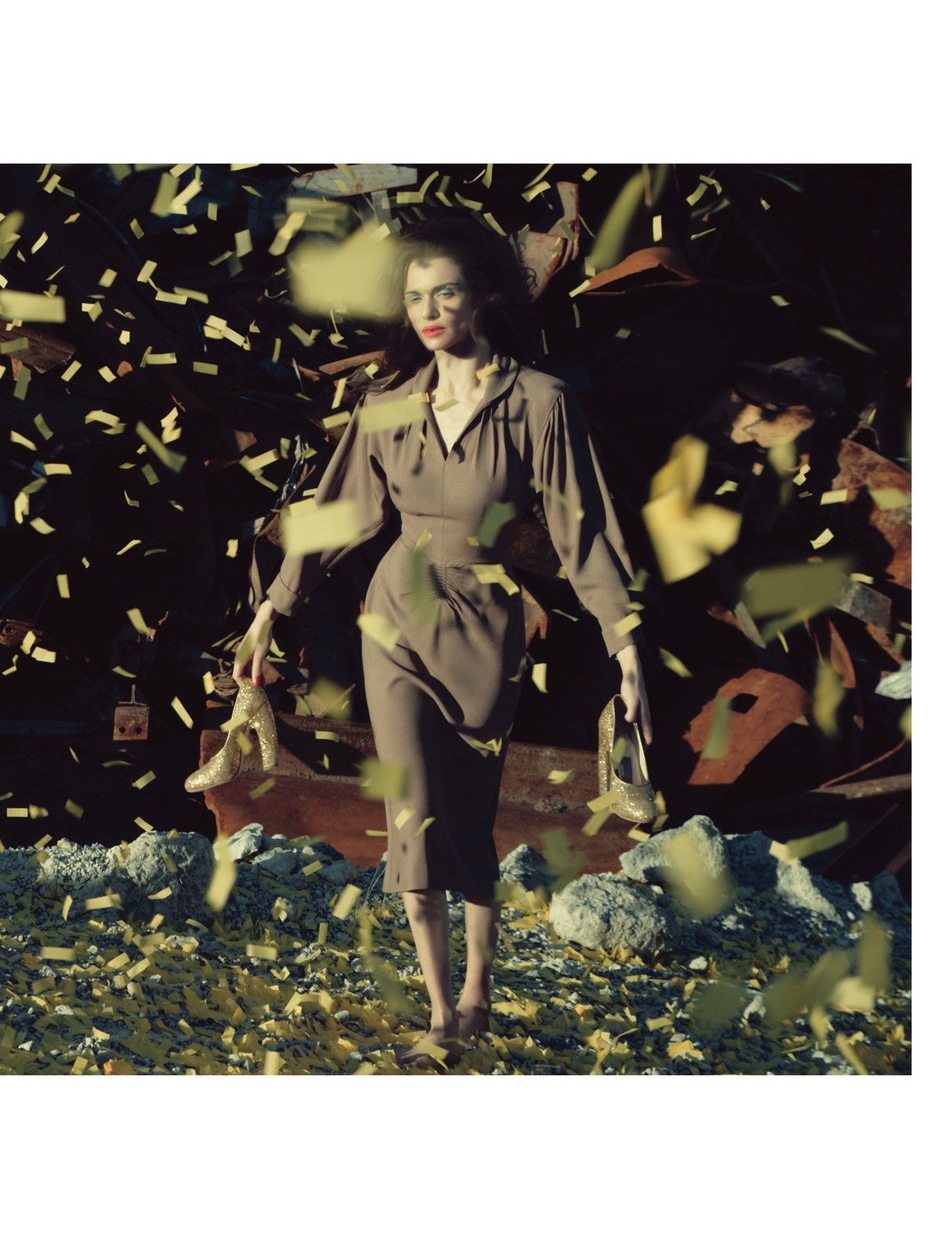
Harland Miller: Where were we?
Rachel Weisz: You were saying it’s a long walk up from the street if you don’t take the lift …
HM: It is a long way up, but at least you can’t hear the buzz of the tattoo gun from here.
RW: Oh, the tattoo shop downstairs! Don’t you like the sound?
HM: No – it makes me want to get another tattoo, and one’s fine. Have you still got your ladder tattoo on your hip? That seems quite appropriate living all the way up here.
“I think most people look back on their childhood and think: ‘Phew! I’m out of that!’ But of course, I grew up in a very nice house in Hampstead Garden Suburb, so what do I know?” – Rachel Weisz
RW: Yes, they don’t go away.
HM: But you can laser them now.
RW: Yeah but why would I? I mean, those were the greatest times.
HM: I should explain that after you left Cambridge you formed a theatre group with Sacha Hails and Rose Garnett and the play Slight Possession, which used a step ladder as a prop, was a play you took to Edinburgh Festival, which you also wrote and put on, right? Where it all began I guess.
RW: That’s right, and actually I was thinking of adding to the tattoo somehow …
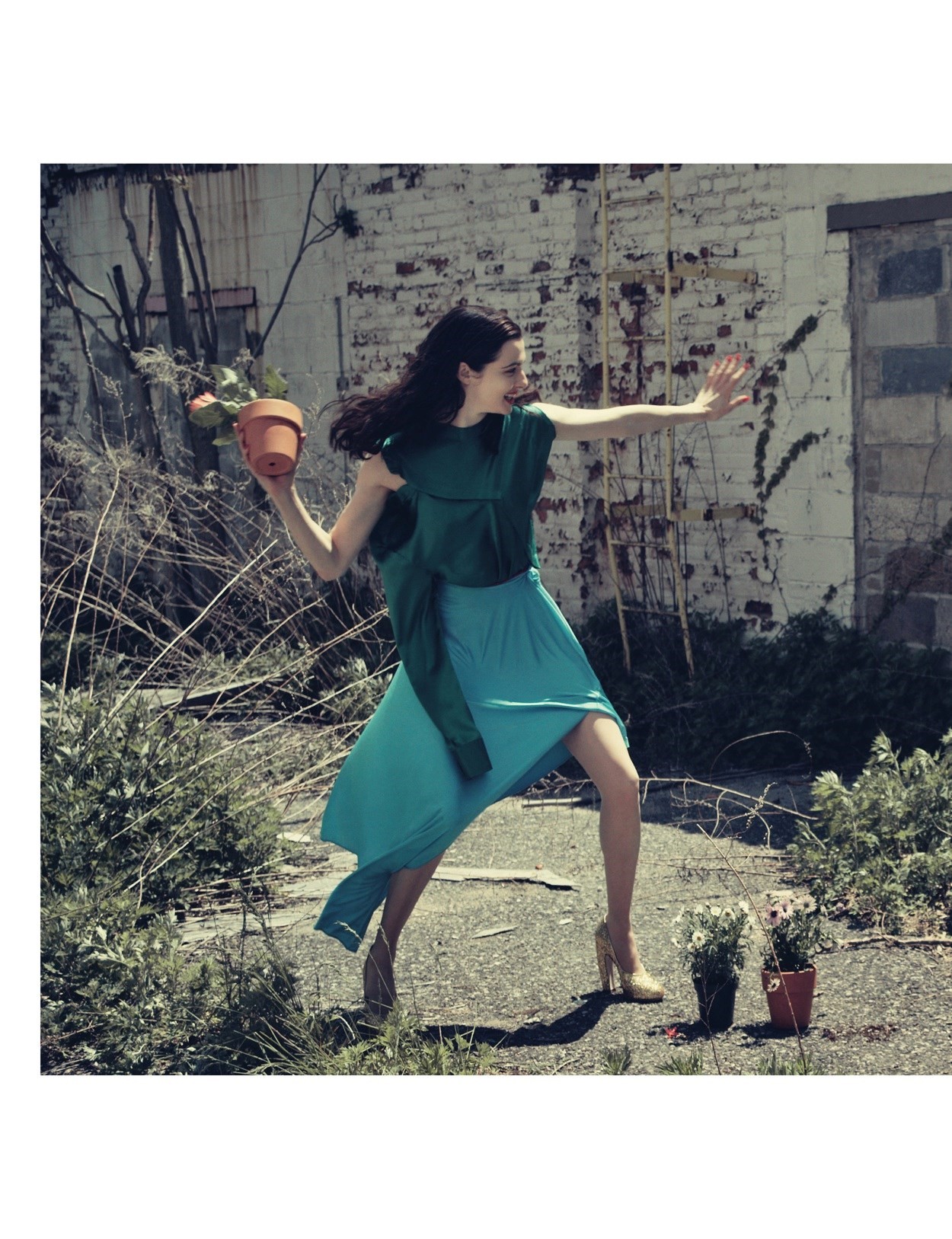
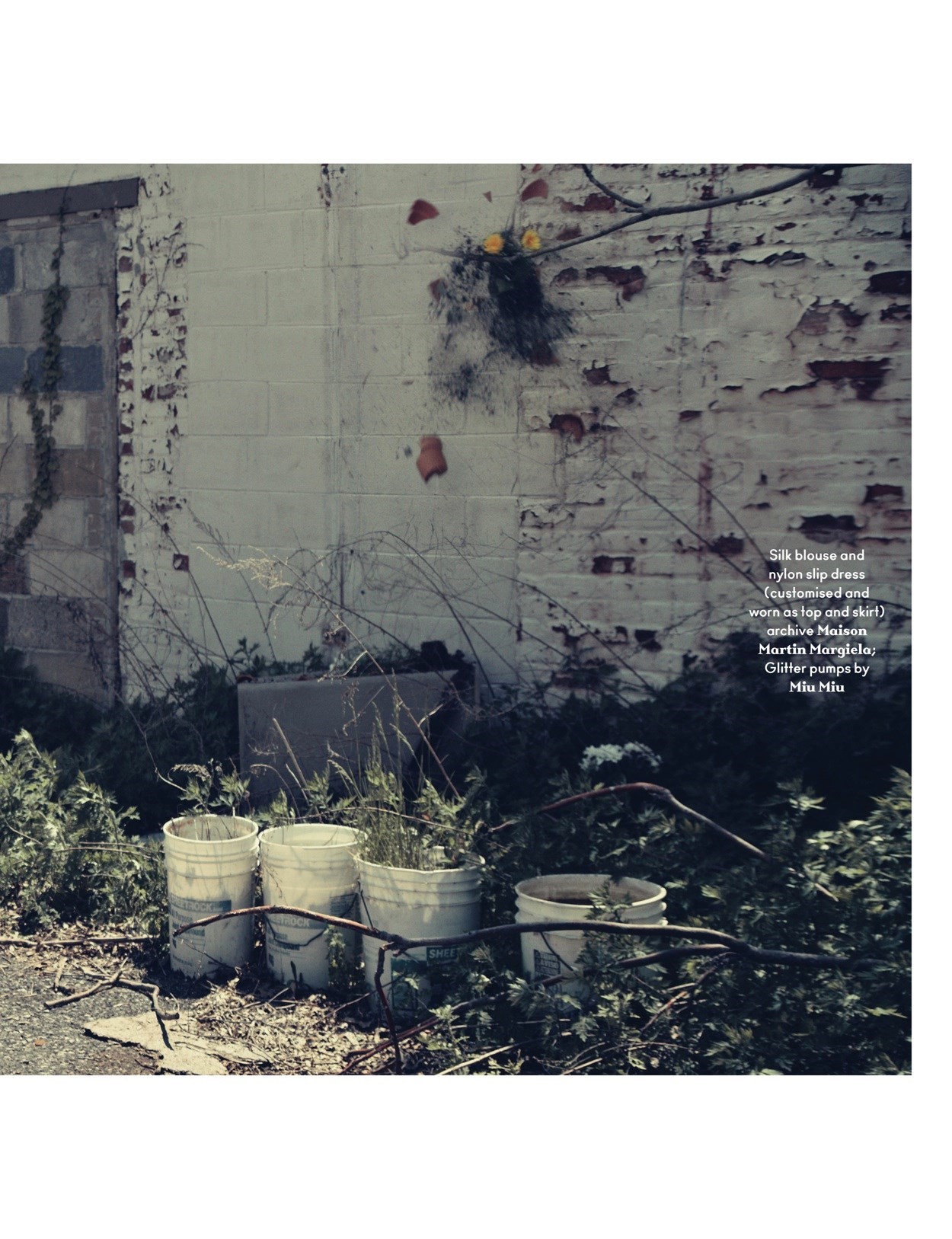
HM: A snake maybe? That would create quite a yin-yang thing.
RW: Yeah – now that I’m so balanced!
HM: [Laughs] But what else were we saying … ?
RW: I was saying I’d love a cigarette, and you were saying you’d had one in Beirut recently – your first in five years. How come?
HM: I was having an exhibition there and had dinner with the minister of culture – a fabulous guy with an amazing voice and –
RW: Voice?
HM: Yeah, when I entered his place he was singing a Sinatra song, That’s Life. It’s a great song ... about suicide, I believe.
RW: I don’t know it.
HM: Yeah you do. “That’s life / and I can’t deny it / many times I’ve thought of cutting out / but my heart won’t buy it ... ”
RW: Do you think he’s definitely talking about suicide?
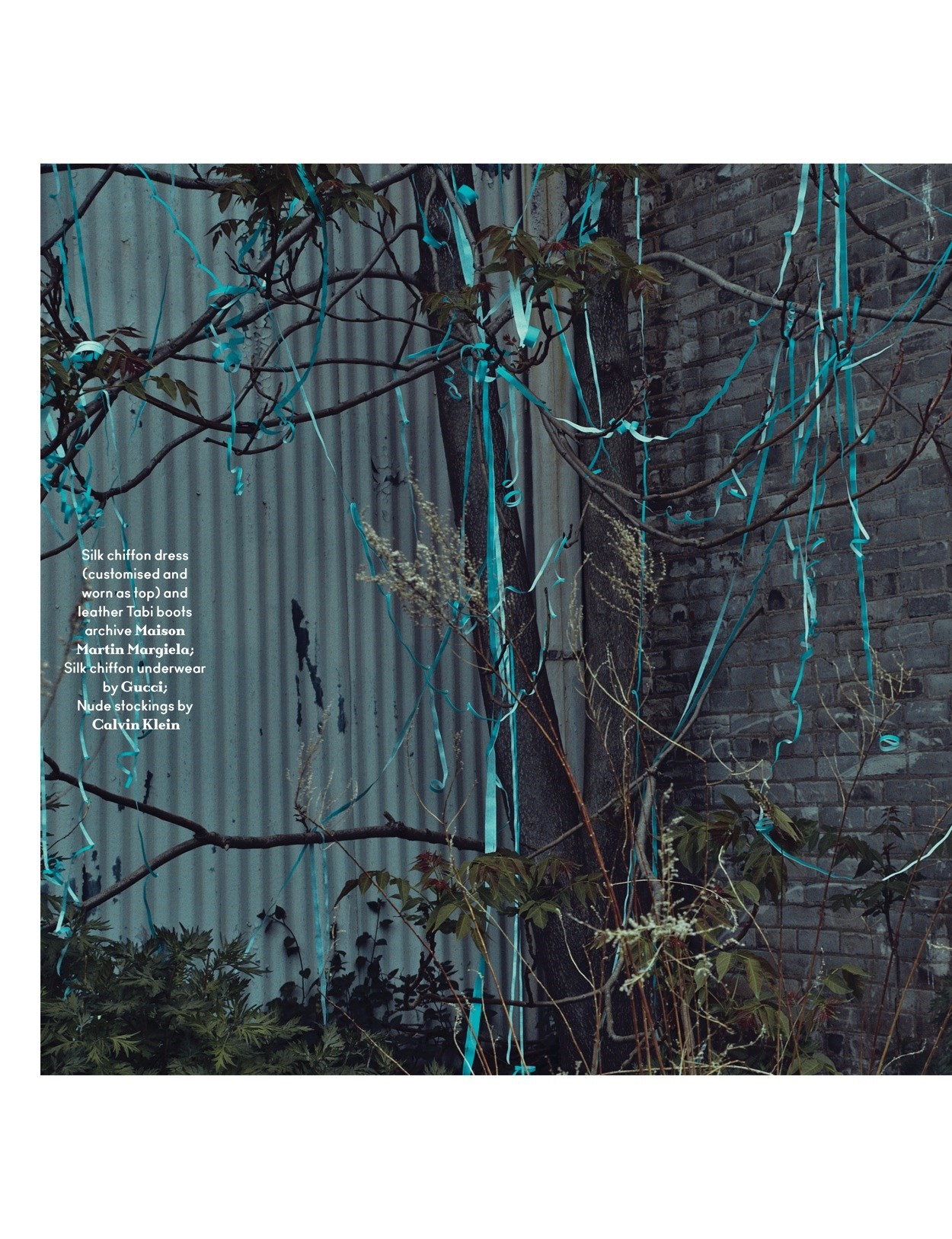
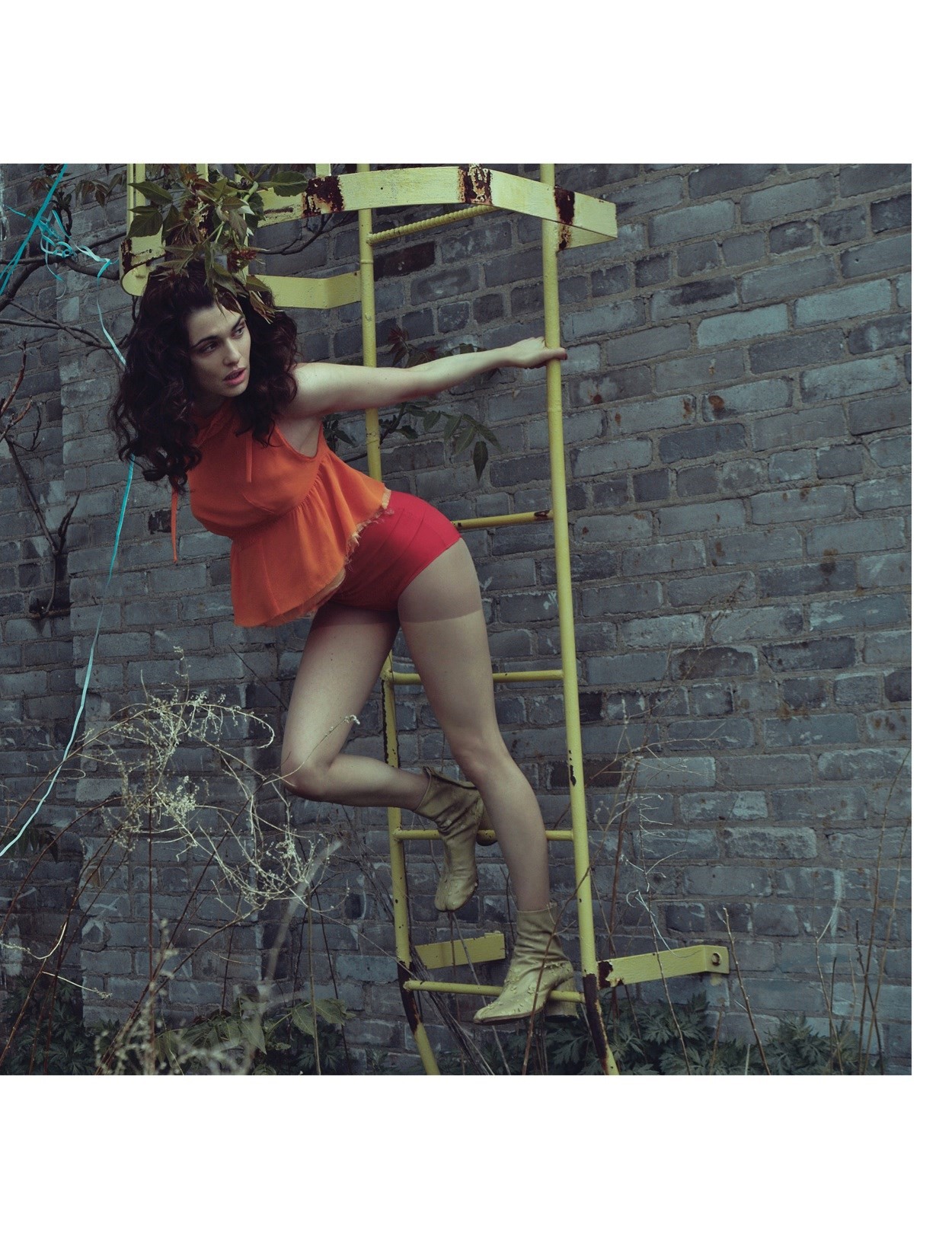
HM: Well, in the loose semantics of “swing” that’s how I’d interpret “cutting out”, though I love it for that next line: “But my heart won’t buy it.” Because I’m not a fan of suicide.
RW: No. No! Never, as a mum I shrink from it. But tell me, why were you smoking at the minister of culture’s house?
HM: Well he offered me one, and I thought the first thing I say here shouldn’t be “no”. And I got a rush like it was my first time – do you remember yours?
RW: It was in the Odeon ...
HM: The Odeon?
“I thought Bowie was a poet in touch with God. For me, he really dramatised not belonging in a really powerful and poetic way and when you’re 14 and you feel grotesque, it’s like: ‘I’ve found a friend’” – Rachel Weisz
RW: You used to be able to smoke in cinemas, didn’t you?
HM: [Laughs] Yeah sure, when they were one and six.
RW: Well I was very young – I’d sneaked in to see Reds.
HM: That Warren Beatty film? Wasn’t there some hoo-ha about it?
RW: It was the most expensive movie ever made – then – which is kind of ironic since it was about going to Russia to fight for communism. I watched it again recently – without cigarettes – and Diane Keaton was incredible.
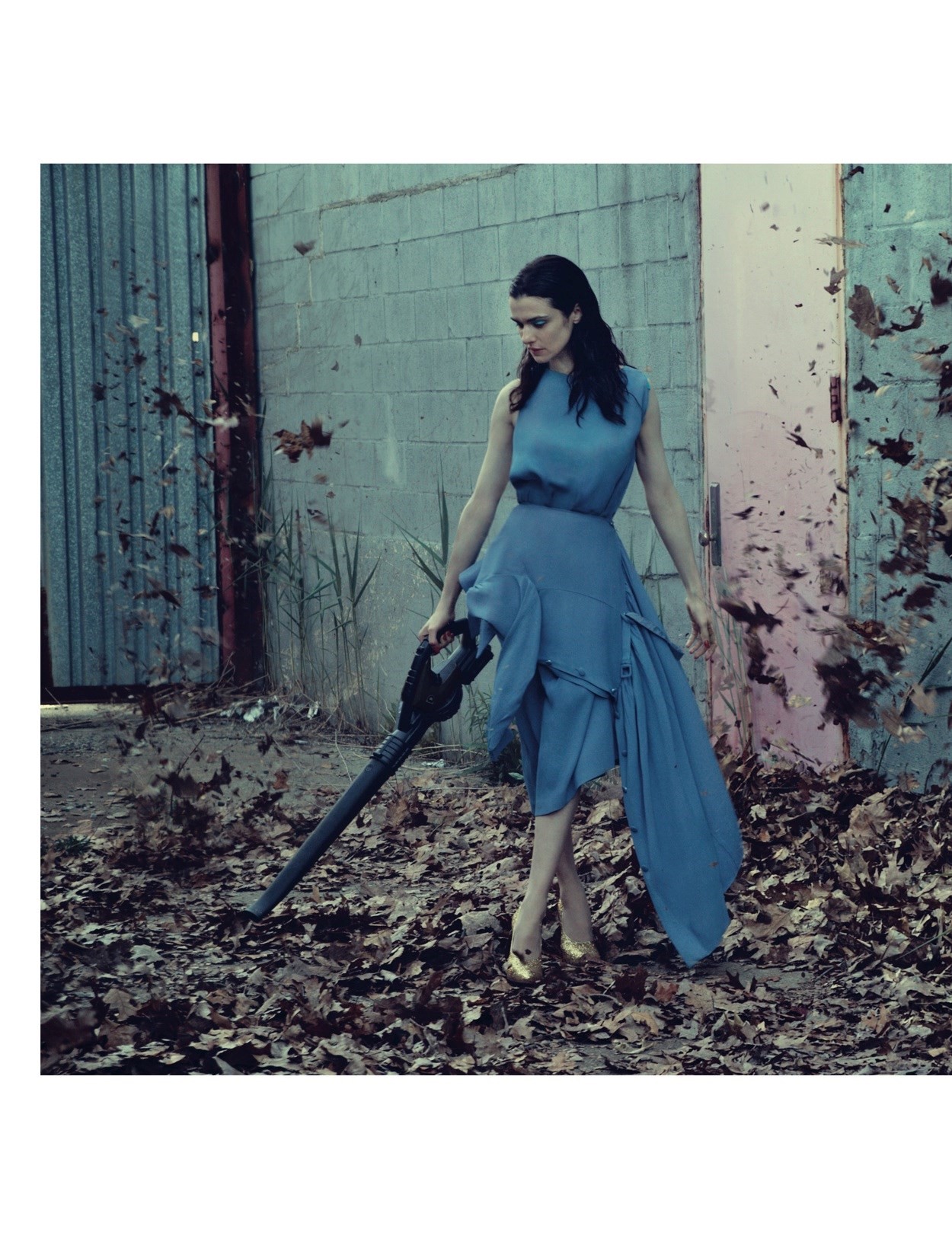
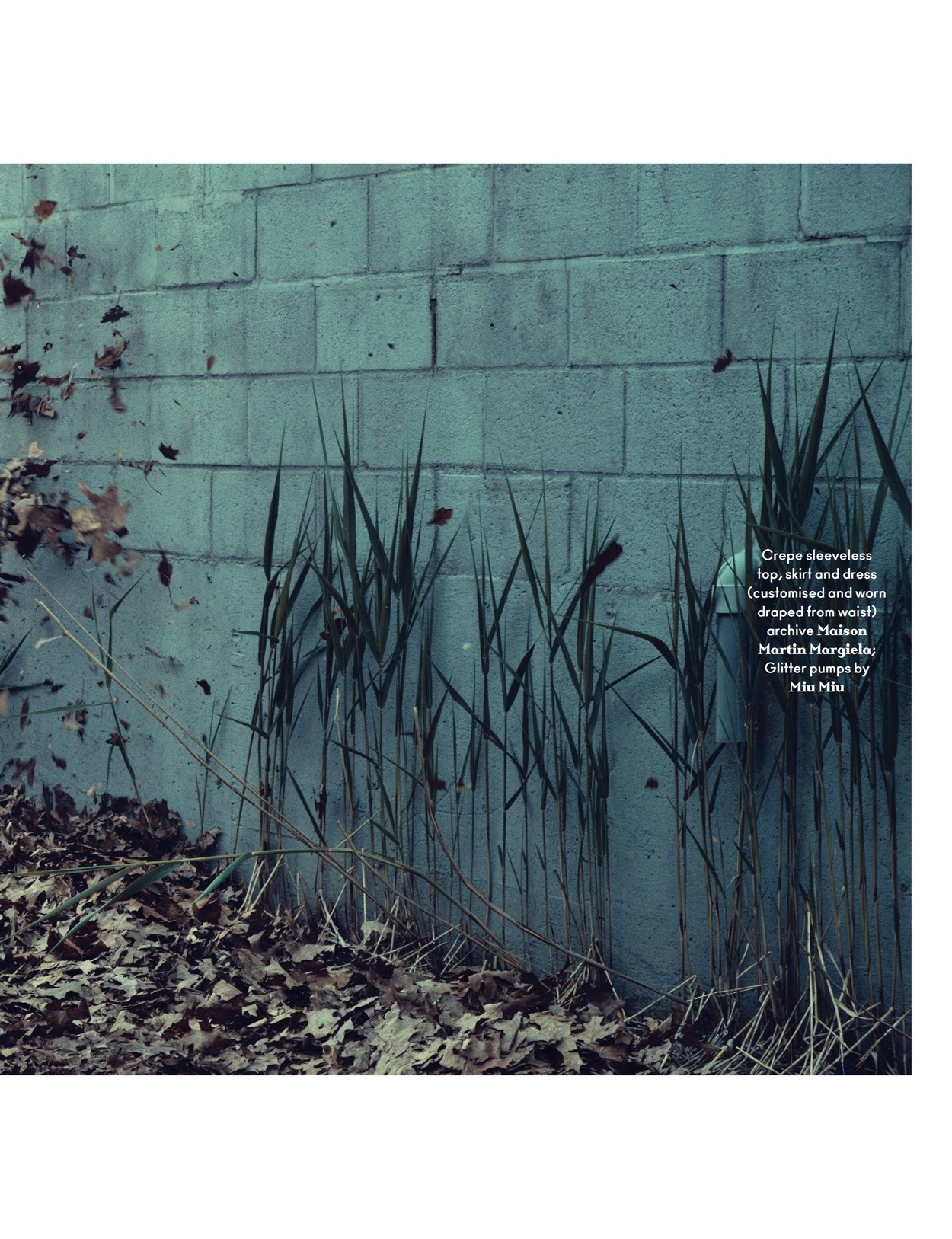
HM: Was it to do with the way actors use cigarettes that made you pick it up?
RW: No, it was just ... expected. I remember after school, there was a line of phone boxes on Edgware road, and that’s where everyone used to smoke.
HM: Yeah, I remember phone boxes smelt of smoke ... and piss too, actually. I always associated that smell with being in love.
RW: Seriously? How come?
HM: Well, when I first moved to London my girlfriend was back in Leeds – and there was no phone in my digs, so I’d go to the nearest phone box. You get that overly romantic sense of yourself when you’re in love don’t you – you’re walking down a deserted street, but you’re more than someone going to the pub, you are a person who is “In Love”. And you haul open the door to the phone box and ...
RW: It smells of piss?
HM: Yeah, and those things get mixed up in your head. But talking of formative experiences, you have a painting on your wall that reads: It Was Hell Says Former Child.
RW: Yeah – you painted it!
HM: I know, but I was wondering – maybe this is intrusive – but was it? Hell, I mean?
RW: Oh! [Laughs] You know, it’s funny because my Dad came over yesterday for Henry’s fifth birthday and he walked in and saw the painting and he’s Hungarian, and he started reading out loud: “It vas hell ... ” and as he began the second line it just died on his lips and I realised it could be read as a direct reproach [laughs]. But no, I just think it’s funny. You normally hear about a “former boxer” or “president” but the thing about a “former child” is, anyone who makes it past adolescence is a former child! And I think most people look back on their childhood and think: “Phew! I’m out of that!” But of course, I grew up in a very nice house in Hampstead Garden Suburb, so what do I know?
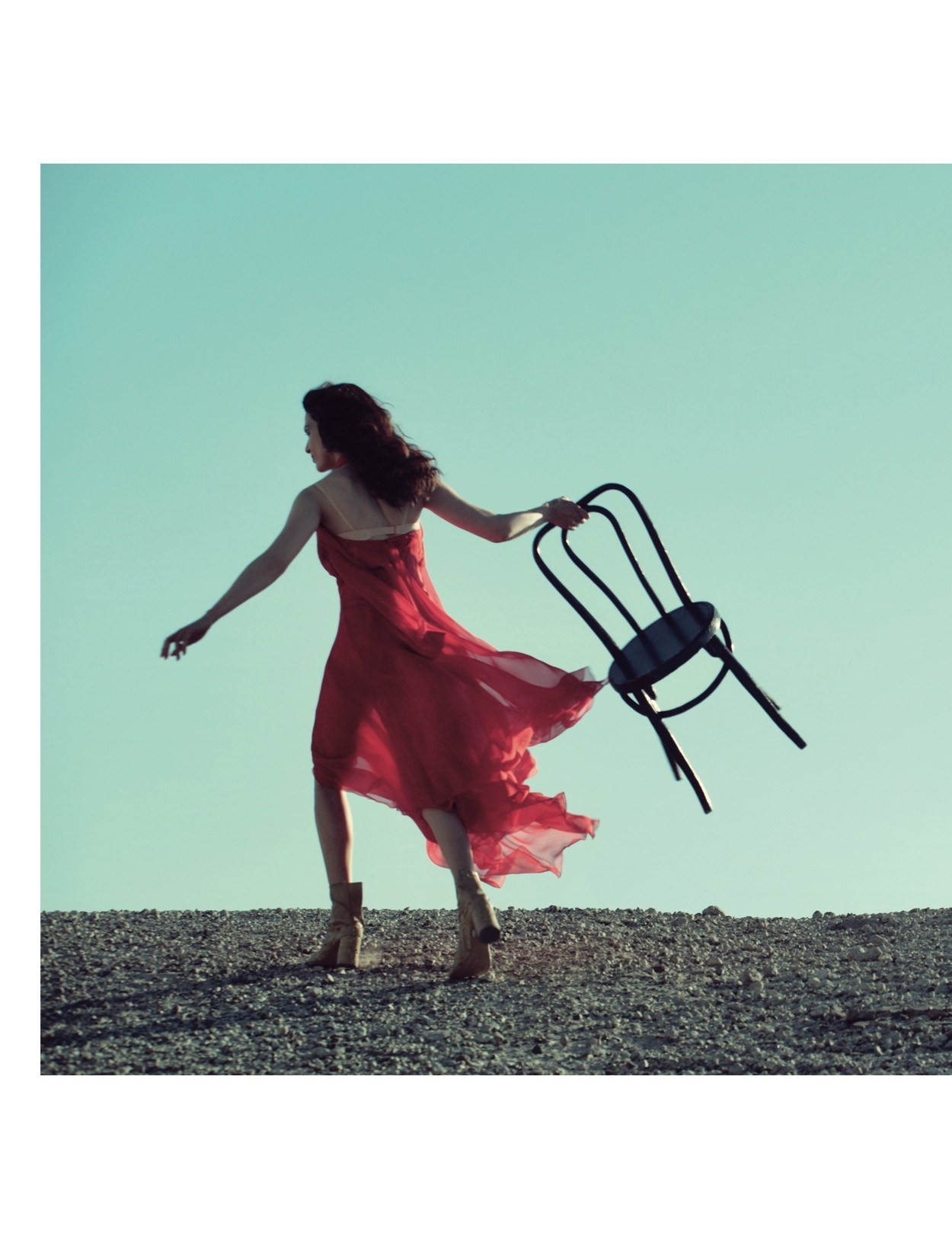
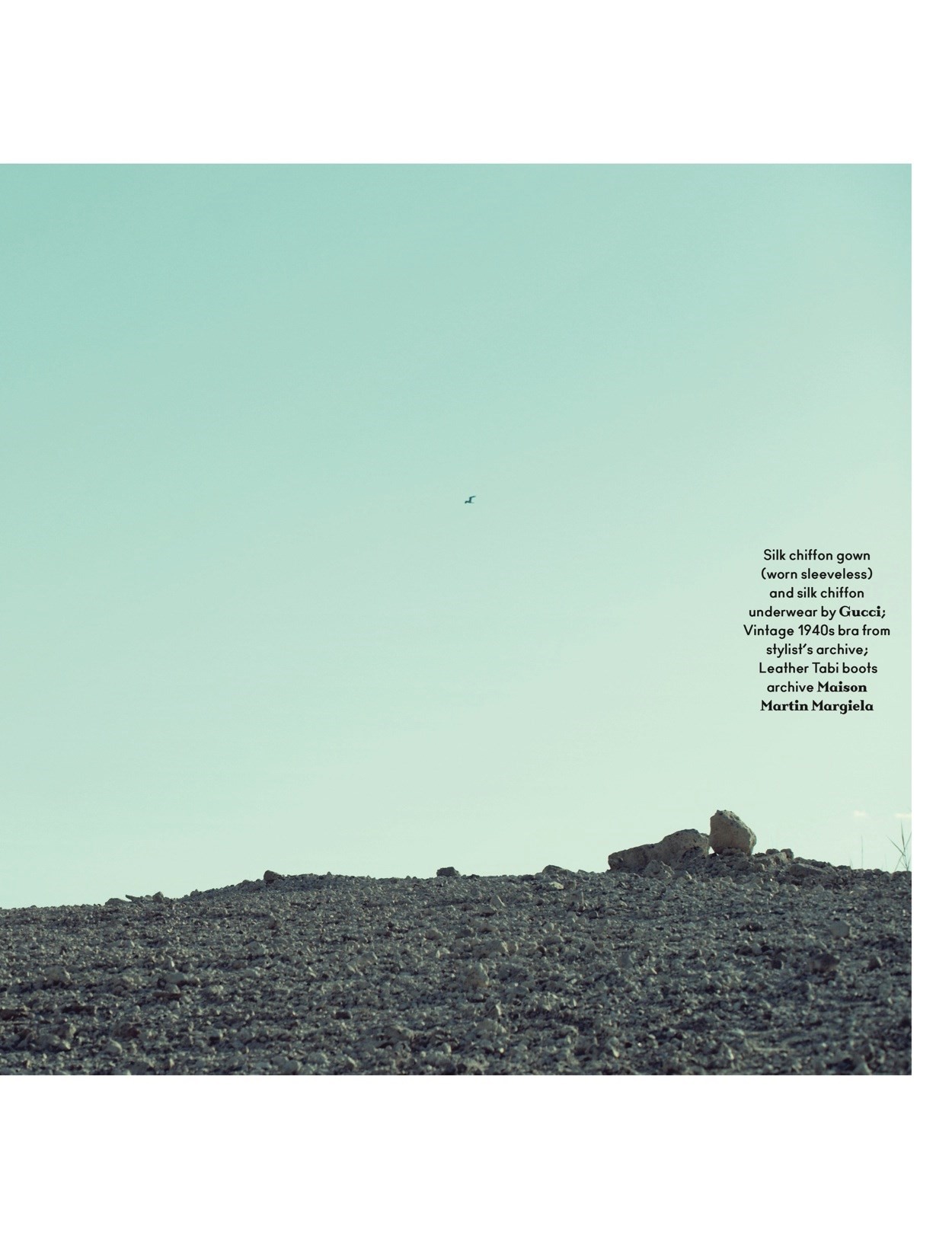
HM: I’m always interested with that series of paintings, why people choose the titles they do. It’s usually very personal, like it’s literally their story.
RW: Yes, because the scale implies something quite epic about the subject. But actually, I thought it was about your childhood.
HM: Well again, my childhood in Whitby was really idyllic. Problems began later when I started wearing women’s clothes.
RW: [Laughs] You wrote that book, Slow Down Arthur, about that whole time of dressing up – they’re making a film of it now?
HM: It’s coming to a cinema not very near you, not very soon. Development – as I’m sure you’re aware, is a bit of a roller coaster – one minute it’s happening, the next not. But the story itself is timeless, so I know it will happen.
“If I was a record, I’d be Beethoven. It’s very raw and passionate, it makes you want to get out there and do your thing” – Rachel Weisz
RW: I’m thinking it’s really relevant actually, in that today people have these comparatively sophisticated lifestyles and music is simply a part of that lifestyle – like a mood enhancer – so it’d be quite shocking to an audience now to see how then music wasn’t just a part of your lifestyle, it was your lifestyle. Ziggy, the character in your book, takes that very far doesn’t he? He thinks he’s Bowie. I mean, I thought Bowie was a poet in touch with God. For me, he really dramatised not belonging in a really powerful and poetic way and when you’re 14 and you feel grotesque, it’s like: “I’ve found a friend!”
HM: Yeah – if you didn’t fit in back then, Bowie was your man. But I think it’s a universal story too; Ziggy’s imagination never really accepts his lot and so he creates an alternative world. People are still doing it now through, erm ...
RW: Britney Spears maybe?
HM: Maybe – and if you identify with Britney, God bless you, but I think that’s more to do with celebrity than art. Interestingly though, Britney did actually unhinge while singing about the everyday stuff didn’t she; guys, relationships … Whereas Bowie, who was talking about marginal stuff, insanity and art, emerged as being quite savvy and together.
RW: Which brings me to your painting Incurable Romantic Seeks Dirty Filthy ... ?
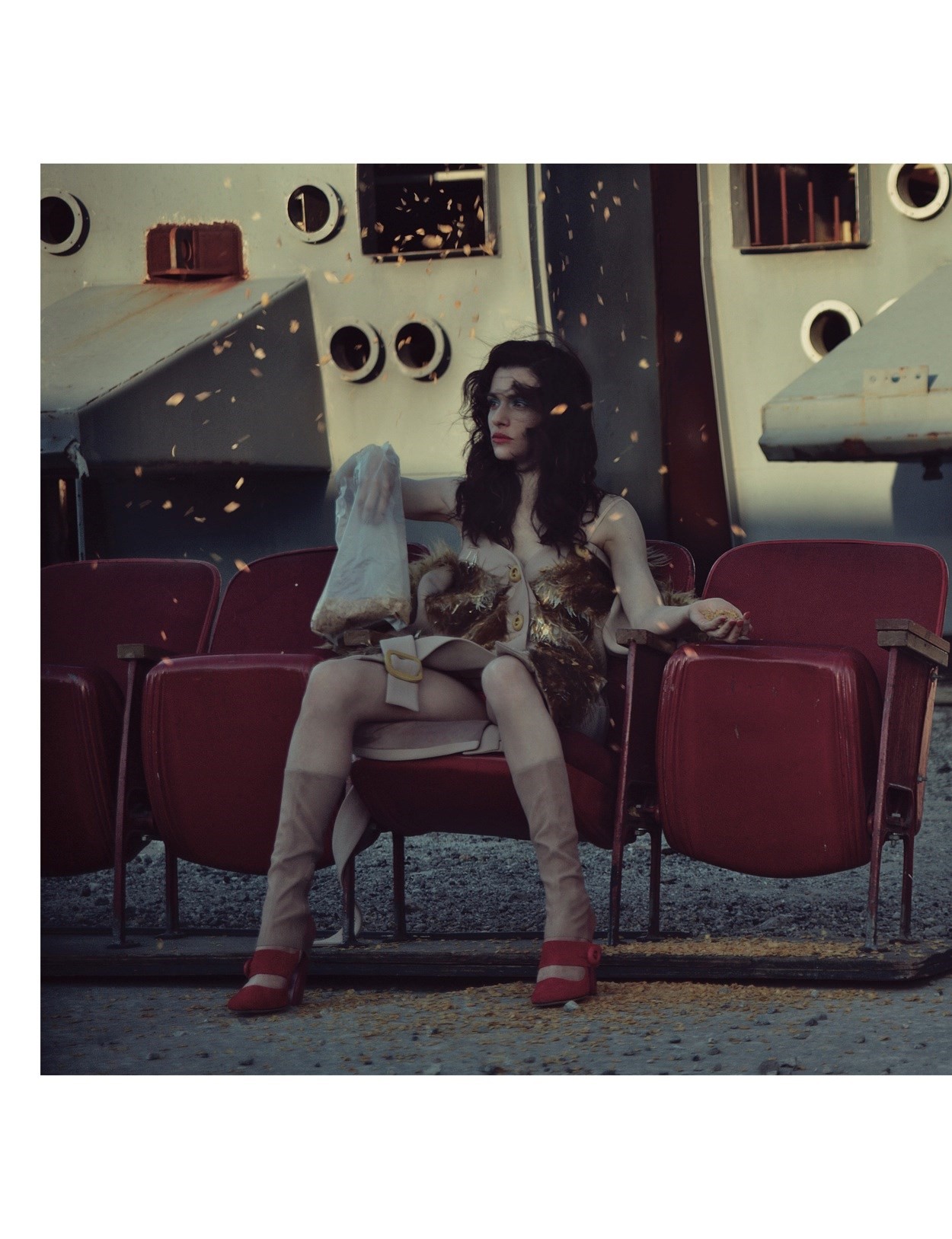

HM: ... Whore.
RW: Yeah, but not the wording, the design you used – it reminds me of an R.D. Laing book. His whole theory about schizophrenia, was that schizo madness was a sane reaction to an insane world. So his theory is, it’s being sane to be insane ... do you know what I mean?
HM: Yeah ... but I’m in two minds [laughs]. But let’s talk about a movie that is coming to a cinema near you – Whistleblower?
RW: Well, it’s a true story about Kathy Bolkovac, who I play, a cop from Nebraska, who was sent to the former Yugoslavia to work as part of the UN task force, basically police officers from around the world who were sent to Bosnia to restore law and order. These people get diplomatic immunity, which means they can do whatever the hell they like, and so a really disturbing lawlessness ensued, in that, there were so many men stationed there, they basically needed sex. So this huge sex trafficking industry came about to service them, but it wasn’t like professional prostitutes came in, did their tricks and left. These girls were captives – they were kept in cages like animals, and conditioned through physical and psychological torture to the point where they wouldn’t even think about trying to escape. It’s a really tough story, but what I loved about it is this woman Kathy Bolkovac. Everyone else turned a blind eye. I probably would have too …
HM: You think?
RW: I wouldn’t even know where to start ... but Kathy Bolkovac, because she was a cop and had this character where if she saw corruption she had to sort it out, started making trouble, big trouble because the UN were basically sanctioning it all, covertly, using UN trucks to bring these girls over the border, and she just blew the whistle. She’s not a do-gooder moralist. She was doing her job, and she completely risked her life – my God, it’s amazing she’s still alive.
HM: I guess the question would be, why not make a documentary about it?
RW: Sure, and my answer would be, it’s a hugely important issue, but it’s also a character study of this woman who is at the centre of it: what would it be like to be like that? I’m nothing like that, anything for a quiet life.
HM: That conjures visions of a place in the country, keeping chickens. The furthest away from living in the middle of Gotham City above a tattoo parlour. If this street were an album, I think it would be something like Appetite for Destruction.
RW: That’s like that game where you ask: “If you were a novel what would you be?” And people say, “Oh yeah, I’d be Tolstoy.” Well, if I was a record, I’d be Beethoven [laughs].
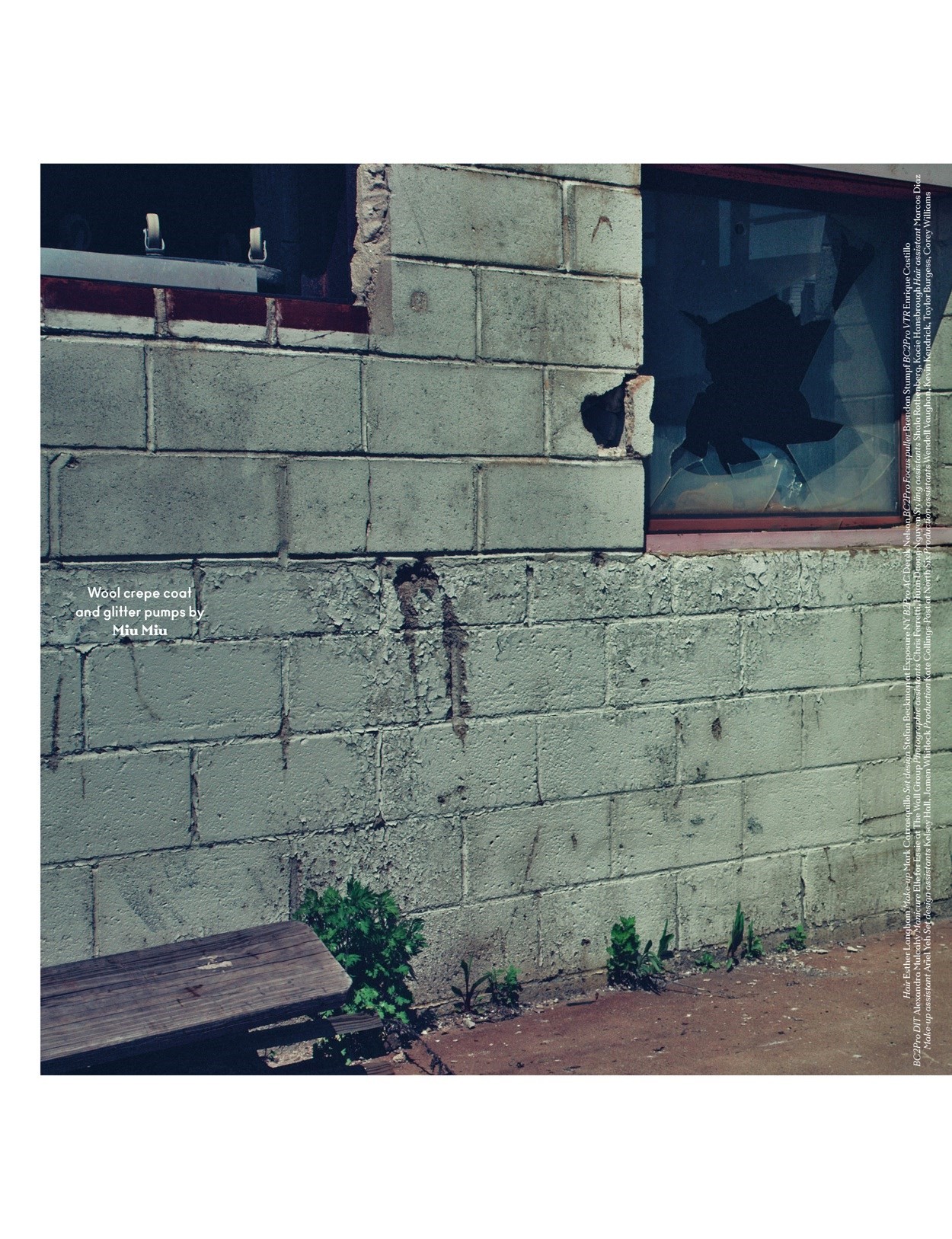
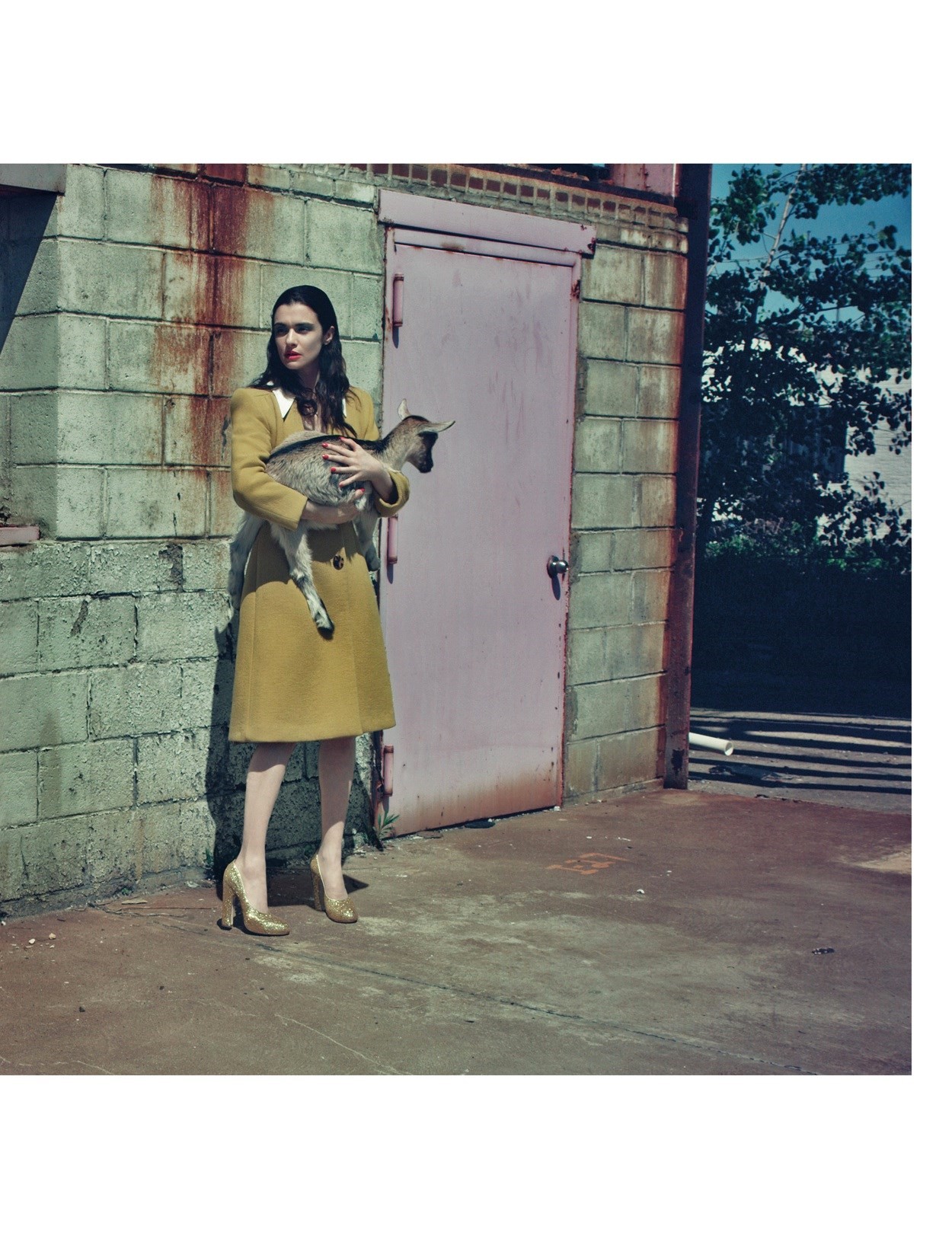
HM: Well, Beethoven’s quite similar to heavy rock.
RW: It is – it’s very raw and passionate, it makes you want to just get out there and do your thing!
HM: I know what you mean – I feel capable of doing things when I’m listening to a bit of Ludwig van, that I immediately don’t feel capable of anymore when the record finishes. But I’m wondering, is there a connection here between the rawness and passion of Beethoven and your love of fellow German Pina Bausch, who I know was the inspiration for the photos that will accompany this conversation?
RW: It’s a coincidence. AnOther came up with it as a premise not knowing that she’s my favourite choreographer – I’ve been a huge fan since I first saw her work at Edinburgh Festival. In fact, I much prefer to watch a Pina Bausch performance than most plays or films.
HM: Really?
RW: Oh yeah. It’s like, “stop talking”, you know? No words.
HM: Well she wasn’t a big talker herself, was she? She never really tried to explain her work, which ironically gave rise to quite a lot of heated debate ...
RW: Well there’s a lot of violence and sexuality and what she called “the pornography of pain” in her portrayal of human relations. People fucking with each other’s heads, and it alarmed some critics that she never made it clear where she was coming from, morally.
HM: Sure, but I remember at Sadler’s Wells thinking it was actually funny – compounded by the fact that nobody else was laughing.
RW: No, I think you’re right – it’s definitely funny, again I think that’s because there’s no words. Which reminds me, the other night I went to see this Marina Abramovic performance …
HM: Where she sits in a chair and people sit opposite her and she just looks into your eyes for however long you can take it for?
RW: A minute or a day, and she’s been doing it for months now. Anyway, my friend knows her, and we met her in the loos, and Marina said to her – in her very Serbian accent – “Darling, the thing I learnt is don’t speak! Just don’t speak – it ruins a relationship. A relationship is all about not speaking.” And I thought, wow! That’s so great! Not that I’m not loving this conversation …
HM: Fuck, my relationship must be in tatters then. But listen, as injunctions go, it’s clear we should stop now. Let’s quit while we’re behind.
Hair: Esther Langham; Make-up: Mark Carrasquillo; Set design: Stefan Beckman at Exposure NY; B2Pro AC: Derek Nelson; B2ProFocus puller: Brendan Stumpf; B2Pro VTR: Enrique Castillo; B2Pro DIT: Alexandra Mulcahy; Manicure: Elle for Essie at The Wall Group; Photographic assistants: Chris Ferretti, Huan Daong-Nguyen; Styling assistants: Shola Rothenberg, Kacie Hansborough; Hair assistant: Marcos Diaz; Make-up assistant: Ariel Yeh; Set design assistants: Kelsey Hall, Jamen Whitlock; Production: Kate Collings-Post at North Six; Production assistants: Wendell Vaughan, Kevin Kendrick, Taylor Burgess, Corey Williams.
This story originally appeared in the Autumn/Winter 2011 issue of AnOther Magazine.

